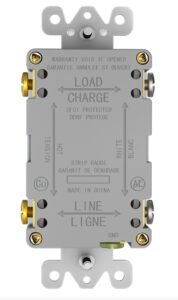Introduction
Installing GFCI outlets is crucial for electrical safety, but it doesn’t have to be expensive or complicated. Whether you’re an HVAC installer, distributor, or wholesaler, knowing how to install GFCIs efficiently can save you and your customers money.
In this guide, we’ll cover:
✅ Where to install GFCI outlets.
✅ How to cut installation costs.
✅ Simple maintenance tips to ensure long-term performance.

1. Where Should GFCI Outlets Be Installed?
For maximum protection, the NEC requires GFCIs in:
🏠 Residential Settings:
✔ Kitchens (near sinks)
✔ Bathrooms
✔ Garages
✔ Outdoor outlets (patios, decks, pools)
✔ Basements & laundry rooms
🏢 Commercial & Industrial Settings:
✔ Restaurants & food prep areas
✔ Schools & hospitals
✔ Construction sites
✔ Warehouses & workshops
Installing GFCI outlets in these key locations reduces the risk of electrical hazards and ensures compliance with safety regulations.

2. How to Reduce GFCI Installation Costs
GFCI outlets are more expensive than standard outlets, but smart installation methods can help save costs.
💰 Tip 1: Use “Downstream Protection”
- Instead of installing multiple GFCI outlets, install ONE GFCI at the first outlet in a circuit.
- Any regular outlets connected downstream will be protected by this single GFCI.
- Example: Instead of installing 5 GFCI outlets in a kitchen, you only need one at the first outlet, reducing costs.
💰 Tip 2: Choose GFCI Outlets with Built-in Self-Testing
- These models automatically check if they are functioning properly, reducing the need for manual testing and replacements.
- Long-term savings on labor and maintenance.
💰 Tip 3: DIY vs. Hiring an Electrician
- If you’re replacing an existing outlet with a GFCI, you can DIY.
- However, new installations involving rewiring should be handled by a licensed electrician to avoid safety risks.

3. How to Test & Maintain GFCI Outlets
GFCI outlets need regular testing to ensure they work properly.
✅ Monthly Test Procedure (Takes less than a minute!):
- Press the TEST button—the power should cut off.
- Press RESET to restore power.
- If the outlet does not turn off when tested, it should be replaced immediately.
🔧 Signs That a GFCI Outlet Needs Replacement:
❌ The RESET button won’t push in after testing.
❌ The outlet frequently trips for no reason.
❌ It fails to cut power when tested.
❌ It is older than 7-10 years.
4. Common GFCI Issues and Troubleshooting
❓ Why does my GFCI keep tripping?
✔ Moisture or worn-out electrical wiring could be causing it.
✔ Some appliances (like old refrigerators) may cause nuisance tripping.
❓ Can I install a GFCI outlet without a ground wire?
✔ Yes, but it must be labeled “No Equipment Ground”, and some local codes may require additional grounding measures.
5. Conclusion: Smart Installation & Maintenance Saves Money
💡 Install GFCIs strategically—use downstream protection to reduce costs.
💡 Regularly test and maintain GFCIs to prevent failures.
💡 Educate customers on why GFCIs are a must-have in HVAC installations.
By using cost-effective installation methods and proper maintenance, you ensure safety while keeping expenses under control.
👉 Need high-quality GFCI outlets for your HVAC installations? Contact us today for wholesale pricing!

